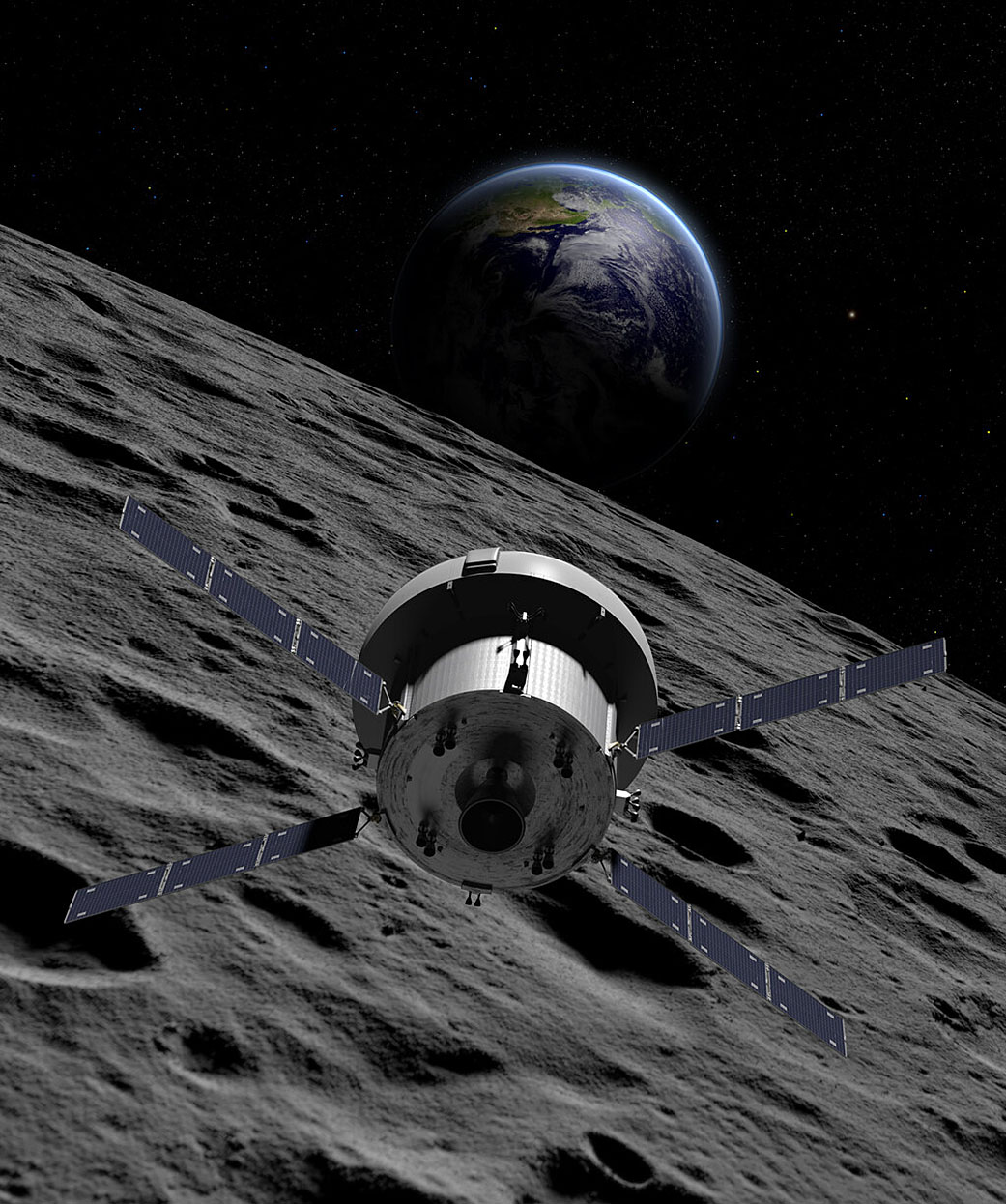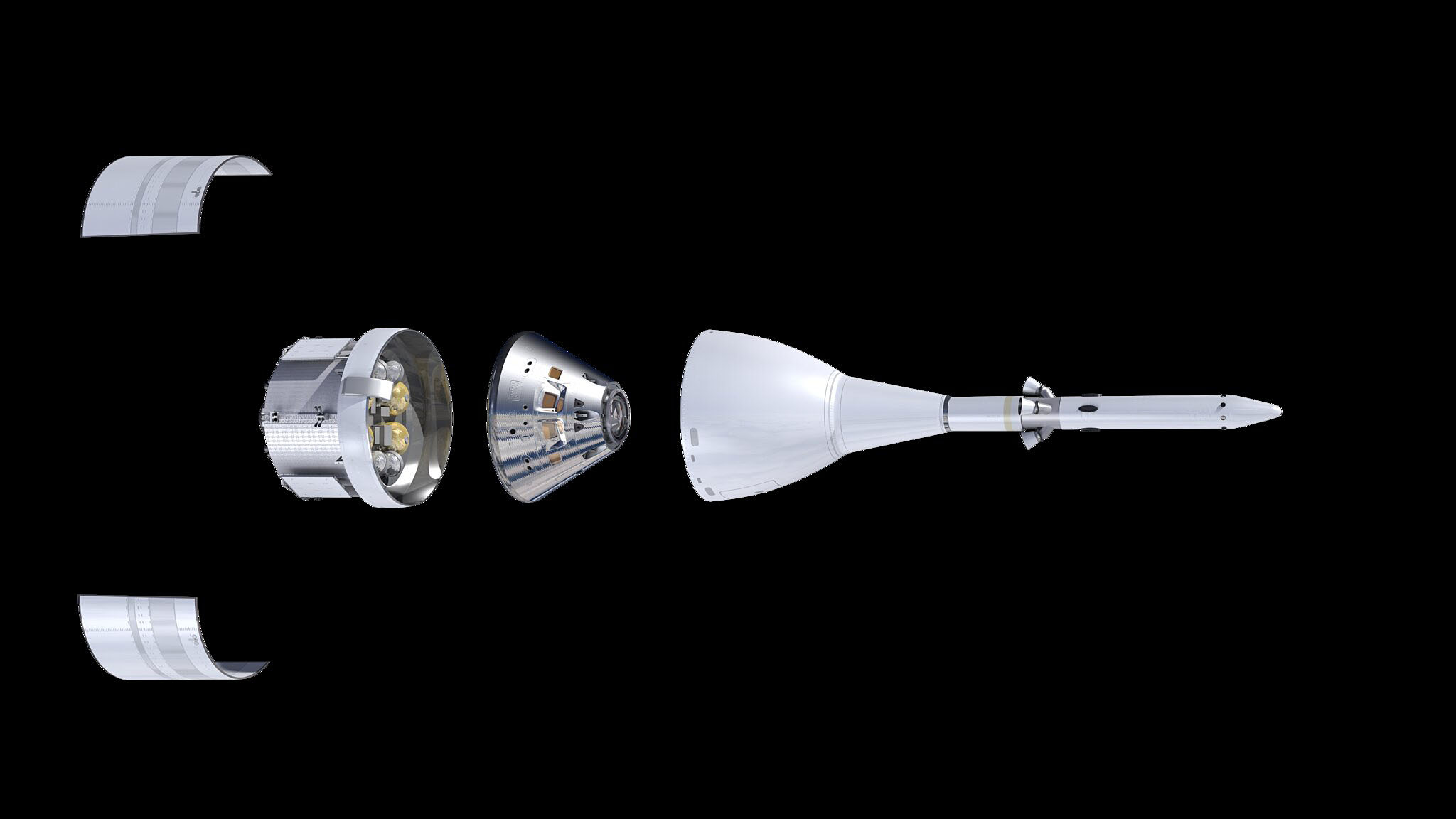This article is for students grades 5-8.
Orion /o-rie-un/ is a new NASA spacecraft for astronauts. The spacecraft is an important part of NASA’s Artemis missions that include sending the first woman and first person of color to the Moon.
____________________________________________________________________________________________
Words to Know
deep space: the vast region of space that extends beyond the Moon and across the solar system
____________________________________________________________________________________________
What Will Orion Do?
Orion will carry astronauts into deep space, and then return them home safely to Earth. This spacecraft will take a crew to the Gateway in lunar orbit. The Gateway is a new spaceship that will serve as a place for astronauts to prepare before missions to the surface of the Moon and, ultimately, Mars.
Orion will take astronauts farther than they have ever gone. Orion will do several things:
- Carry the crew safely to space.
- Serve as a home while the crew is traveling.
- Allow the crew to return to Earth safely from speeds as fast as 20,000 mph.
- Be a “lifeboat” if the crew has to return to Earth in an emergency.
Orion will launch on NASA’s new heavy-lift rocket, the Space Launch System (SLS).
____________________________________________________________________________________________
Words to Know
mass: the measurement for the amount of matter in an object
propulsion: the force that pushes forward or drives an object forward
____________________________________________________________________________________________
How Is Orion Designed?
Orion is designed with the least amount of mass possible. Mass is important in spacecraft design. More mass requires more energy to launch. NASA uses less fuel with a vehicle of lower mass. Orion is designed to be the safest transportation to carry four astronauts and everything they will need to live and work in space for up to 21 days per mission.
Orion has three main parts:
- The launch abort system (LAS) at the top.
- The crew module in the center.
- The service module at the bottom.
If there is an emergency during launch, the LAS will activate within milliseconds. It will pull the crew to safety. Then, the LAS will position the crew module for a safe landing. The crew module carries up to four astronauts. It keeps the crew safe during their journey. The service module attaches to the rocket. It provides life support, including water and oxygen, to the crew module. When Orion separates from the SLS rocket, the service module provides energy and in-space propulsion. Four solar array wings open to provide power to the service module. The arrays provide enough electricity to power two three-bedroom homes.
How is NASA Testing Orion?
Before a spacecraft flies on a mission, NASA must test it to make sure it works well and is safe. Orion had its first flight test in 2014. That mission had no crew. It launched from Florida on a rocket called a Delta IV Heavy. (The IV is the Roman numeral for 4). The test vehicle flew two orbits around Earth. The flight lasted 4½ hours. Orion reached an altitude of up to 15 times higher than the International Space Station. The test vehicle flew at speeds of 20,000 mph and temperatures approaching 4,000 degrees Fahrenheit as it entered Earth’s atmosphere. The test vehicle splashed down in the Pacific Ocean near California.
NASA has tested different parts of Orion, such as the parachutes and the LAS.
What’s Next for Orion?
Orion’s next test will be part of the Artemis I mission. The mission will be the first time Orion launches on the SLS rocket. Orion will not have a crew. NASA will launch Artemis I from NASA’s Kennedy Space Center in Florida. After the rocket separates, Orion will fly thousands of miles past and around the Moon.
After about three weeks, Orion will have traveled more than two million kilometers (more than 1,300,000 miles) and return to Earth. Orion will re-enter the Earth’s atmosphere and splash down near a recovery ship off the coast of California. The goal of Artemis I is to be sure that the crew module safely:
- Re-enters Earth’s atmosphere.
- Descends toward the planet.
- Splashes down into the ocean in the correct spot.
- Can be recovered by U.S. Navy specialists.
On the next mission, Artemis II, Orion will fly past the Moon again. This mission will have a crew and last about 10 days. The flight will be the farthest humans have ever traveled into space.
Ultimately, on Artemis III, Orion will take astronauts to study the Moon’s South Pole.
More About Orion
Orion Collectibles
Orion Quick Facts (PDF)
Orion Crew Vehicle
What Is the Artemis Program?
What Is the Space Launch System?
Infographic: Orion—Designed for Deep Space




























